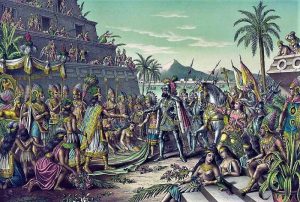Matriarchy
As opposed to the term patriarchy, matriarchy is first and foremost a relationship system, a family conception. It is a common term in anthropology to designate a political system in which women have a dominant role in relation to men.
What is matriarchy?
Matriarchy (maternal law or maternal social order) is a society model based on mother's filiation and in which legal parental authority is exclusively maternal. Thus, the biological father has no rights over the child. It is the mother and not the father who has the real power over the child, the house, land and wealth.
It was in 1861, thanks to the play “Matriarchy”, written by Johann Jakob Bachofen, a Swiss philosopher, that the conception of patriarchy as a family political organization intrinsic to humanity was changed. This is how, later, ethnographic studies were carried out about different peoples governed under this political system.
History of the matriarchy
Although there is no solid evidence to indicate that matriarchal society has existed before, some studies point to the existence of matriarchal cults in humanity’s history. For example, archaeological findings showed that primitive settlement Catal Hüyük had a society governed by matriarchal cults.
Characteristics of the matriarchy
- Sexual freedom and concubinage. There is no notion of couple, fidelity, jealousy or sexist violence. Although certain forms of marriage exist, it is more a matter of concubinages or temporary unions with a fixed duration.
- Fathers are excluded. Matriarchal societies are structured in collectivist families (clans), without recognizing genetic paternity. Children belong to their mother’s clan from which the father is excluded. Thus, children are educated by the men of their clan (maternal uncles) and not by their father.
- Internal family affairs are handled by women while external affairs are usually handled by men. Women elect and revoke male chiefs and even have a veto over all their decisions.
- The woman’s body is deeply respected as a source of life.
- Family property is inherited from mothers to daughters.
Matriarchy in the Bible
According to Jewish legends, Sarah, Abraham’s wife, was superior to him. Indeed, it seems that Abraham owed his position as tribe chief to his wife Sarah as she was a princess who had conferred her status on Abraham by marrying him. Interestingly, Jews did not get their name as Israelites from Abraham, but from Sarah’s son, called Isaac or Israel.
Likewise, Sheba’ Queen, a character who prefers free love rather than marriage, appears in the Old Testament. The kingdom of Sheba, led by this great queen, would have existed between Yemen and Ethiopia in the eighth century BC.
It is said that this Queen was so beautiful that Solomon proposed marriage to her, which she rejects. However, they maintain a relationship from which Ménélik is born, founder of the Ethiopian dynasty of the Solomon’s.
Examples of matriarchal societies in the world
An example of a matriarchal community is the Umoja village made up of a group of women in Kenya. Rebecca Lolosoli leads this village. Men are forbidden to enter this village. Women who live there seek independence after being raped, repudiated and beaten by their husbands. They are in charge of raising their children of both sexes.
On the other hand, the Mosuo, a people in southwest China close to the Tibetan border, have lived for two millennia following a matriarchal organization in which marriage and paternity are practically unknown. In this society, sexuality is free and without domination relations between men and women.
Likewise, the Wayuu society located in the Goajira Peninsula between Colombia and Venezuela, is also organized in matrilineal clans (Eiruküü), in traditional authorities (Alaülayu) and in moral authorities (Pütchipu’üi). The last ones are in charge of the maternal uncle. People united by a bond of maternal consanguinity share a common social condition and past. It should be noted that, the Wayuu organizational system was considered by UNESCO as a cultural heritage of humanity.
Another example of matriarchy in Latin America is the Juchitán city in Mexico, also called the “city of women”. In this artisan city, men were initially in charge of bringing raw material used by women to sell their handicrafts in the market. This is how women ended up taking responsibility for family finances. Today, these roles are better distributed, but they continue to have control over the economic life of the city.
How to cite this article?
Briceño V., Gabriela. (2019). Matriarchy. Recovered on 24 February, 2024, de Euston96: https://www.euston96.com/en/matriarchy/










